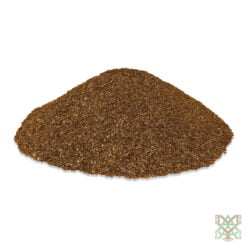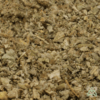Marsh Mallow (Althaea officinalis) – Cut Herb from Poland
Desde € 4,84 Incl. VAT
Botanical name: Althaea officinalis
Common name: Marsh Mallow
Plant part: Cut
Form: Shredded
Country: Poland
Beschreibung
More about Marsh Mallow (Althaea officinalis)
Marsh Mallow (Althaea officinalis) is an ancient medicinal herb that has been used for centuries to treat a range of ailments. It is native to Europe and parts of Asia, but it can now be found growing in marshes and damp meadows all over the world. Marsh mallow has a long history of traditional use as both a food and a medicine, with its leaves, roots, flowers and seeds all being used in different ways. While many people are familiar with the sweet marshmallow confections made from its fluffy white root extract, there’s much more to this versatile plant than meets the eye.
What is Marsh Mallow?
Marshmallow (Althaea officinalis) is a herbaceous perennial plant that grows to a height of 2-4 feet. The leaves are oval shaped and the flowers are white with purple highlights. The plant is native to Europe, Asia, and Africa and has been introduced to North America. Marshmallow is grown for its mucilage content which is used in medicines and cosmetics. The mucilage is obtained from the root of the plant and is used to soothe sore throats, relieve constipation, and moisturize skin.
The History of Marsh Mallow
The Marsh Mallow (Althaea officinalis) is a perennial native to Europe, Asia and Africa. It has been used medicinally for centuries, with the first recorded use dating back to Ancient Egypt. The plant gets its name from the Greek word for “healing”, which is fitting given its long history of being used as a natural remedy.
Marshmallow is most commonly known for its role in treating respiratory conditions such as bronchitis and coughs. The mucilage present in the plant’s leaves and roots helps to soothe inflamed tissues and ease congestion. It can also be helpful in treating digestive issues like heartburn and indigestion.
Topically, marshmallow can be applied as a poultice to wounds or skin irritations to speed up healing. It has anti-inflammatory properties that can help reduce swelling and redness.
While marshmallow is generally considered safe, it can cause allergic reactions in some people. If you experience any adverse effects after taking marshmallow, discontinue use immediately and consult your healthcare provider.
How is it Used Today?
Marsh Mallow (Althaea officinalis) is a perennial herb that grows in damp areas. The leaves and flowers are used to make medicine.
Marsh mallow is used for irritated skin, diarrhoea, mouth and throat soreness, and chest pain. It is also sometimes used as a “demulcent” which means it can help reduce inflammation by coating the mucous membranes. The plant has a long history of medicinal use dating back to the Ancient Egyptians who used it to treat burns and bruises.
The root of the marsh mallow plant is the part most commonly used in modern herbalism. It can be used topically on the skin to soothe rashes, eczema, and other inflammatory skin conditions.
Conclusion
Marsh mallow is an amazing plant with many healing properties, both traditional and modern. It can be used to treat a number of ailments including colds, flus, skin irritation, and digestive issues. With its therapeutic benefits and unique taste, marshmallow has become a popular ingredient in many herbal remedies around the world. From candies to teas and ointments, this versatile herb is sure to bring some much-needed relief whenever you need it!
Reviews (0)
Only logged in customers who have purchased this product may leave a review.
Disclaimer
Related products
Herbs (Plants)
Sacred Plants
Sacred Plants – Ololiuhqui – Morning Glory (Ipomoea corymbosa) Whole Seeds from Mexico, 2 grams
Herbs (Plants)



















Reviews
There are no reviews yet.